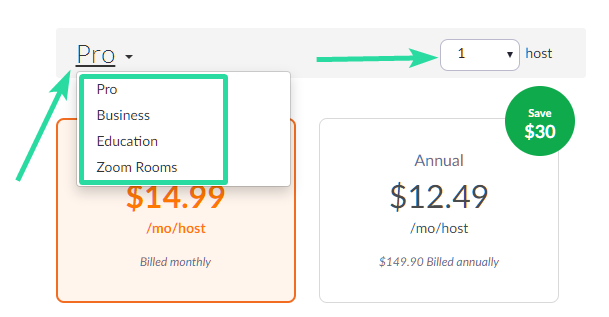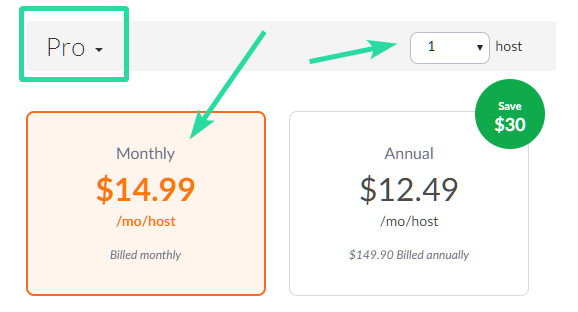Everywhere you look these days, you see the word ‘Zoom’ popping out at you. That’s because this California based cloud platform has taken the world by storm with its intuitive yet professional looking UI. As lockdowns began being enforced in various countries, Companies, schools, and even my own yoga classes (yes I do yoga, it’s cool!) have been forced to turn to video telephonic communications.
Zoom allows users to create video conferences as well as webinars. While the list for video conferencing apps is virtually endless, let’s concentrate on the webinars aspect of Zoom.
What is Zoom Webinar

As the name suggests, a webinar is web (video) seminar. Zoom Webinar is an add-on to Zoom’s Video Conferencing feature.
Zoom Video Webinars allow the segregation of panelists and the audience, which is especially useful when you have a larger number of view-only attendees. This separation allows for a directed flow of information which is not something a Zoom Meeting is about.
Building on the aspect of unidirectional flow of information, Zoom Webinar panelists cannot see the audience, and the attendees cannot see each other. Though the flow is unidirectional, Zoom Webinar allows the panelists to engage the audience in polls, Q&A’s, etc.
In addition to this, Zoom Webinar unlocks its audience cap of 500 people (in Zoom meetings) all the way to allow up to 10,000 attendees.

Some features included in Zoom Webinar are:
- Automatic mute feature
- Panelist green room
- Screen sharing for presenters
- Custom registration
- Live broadcasting
- Reporting & analytics
- On-demand viewing
- Chat
- HD video and audio
- Q&A and polling
- Attendee raise hand
- Attention indicator
- Integration with CRM, video platforms, and marketing automation systems such as Marketo, Eloqua, Pardot, Salesforce, Kaltura, and Panopto
- Monetize your webinars
- Customize for your brand
- Integrated global toll-free telephone calling\

Is Zoom Webinar free?
OK, let’s cut straight to the chase. No, Zoom Webinar is not free.
Since it is not a separate entity, Zoom Webinar requires the user to have a Pro account (or better). Yes, free users on Zoom can’t conduct a Webinar even if they buy the required Webinar add-on. The screenshot below shows that the ‘Add Video Webinars’ option is available to Pro users (and above).

See the pricing details of the Zoom Webinar add-on below.
Zoom Webinar pricing

The Zoom Webinar is listed under Optional add-on plans. This add-on starts at $40/month and can go up to $6490/month, depending on how many participants the user would like to engage with.
Pricing for Zoom Webinar add-on based on the number of participants:
- 100 participants start from $40/mo/host
- 500 participants start from $140/mo/host
- 1000 participants start from $340/mo/host
- 3000 participants start from $990/mo/host
- 5000 participants start from $2490/mo/host
- 10,000 participants start from $6490/mo/host
Minimum Price to hold a Zoom Webinar
Well, as the basic Zoom Webinar plan costs you $40, and you need to be a Pro user which in itself comes for $14.99, the least you need to pay to hold a Zoom Webinar is $54.99. This gets you an ability to old a Zoom Webinar with 100 participants, with a single host.
BTW, the Pro account removes the 40-minute limit from Zoom meetings, thus you can now hold a meeting with 100 participants for up to 24 hours.
Where to buy Zoom Webinar License
Well, click here to buy a Zoom Webinar package.

Select your plan based on the number of participants to the number of hosts, and you can opt for annual billing too.
And, if you are a free user, Zoom will automatically add a Pro package into the mix too. You can improve on it by selecting a Business license and the number of licenses based on your requirements (number of hosts/co-hosts).

The column in the right side of the page is updated with your selection, and shows the total amount of the bill. When done, click the continue button at the bottom of the page.

What else do you need
The user hosting a webinar has to be a licensed user. Meaning, users under the free or basic plan cannot hold a Zoom Webinar.
Licensed user(s)
Well, ignore this if you have already bought a Pro license when buying the Zoom Webinar package. However, if you need to add more hosts, you will need to buy a license for each of the additional hosts. This is helpful when the webinar is being conducted with the help of co-hosts.

Zoom requires the host and co-hosts to be a licensed Zoom account (Pro plan or higher). While Zoom itself offers a free Basic plan, you can’t host or co-host a Zoom Webinar with that even if you buy the (expensive) Webinar add-on.
You will need either of Pro, Business and Enterprise plan to conduct a Webinar. Here’s the cost of Zoom’s paid plans: Zoom offers users to choose from four types of accounts.
- Pro @ $14.99/mo/host
- Business (small and medium) @ $19.99/mo/host
- Enterprise (large) @ 19.99/mo/host
► Buy a paid plan from Zoom here.

As expected, each account includes the features of all the accounts below it. Licensed users have added benefits like:
- Customize Personal Meeting ID
- Record to the Zoom cloud
- Be an alternative host
- Assign others to schedule and schedule on behalf of
- Utilize account add-ons such as conference room connector
- Be assigned user add-ons such as large meeting, webinar, or personal audio conference
- Customize Personal Link, if on a business or education account

You can assign a license to a user
Additionally, a Webinar license must be purchased by or assigned to the user.
Licensed users may purchase additional licenses to be distributed to other Licensed users. To assign a license, go to User Management > Users > now select the user to assign the license to > Edit > select the Licensed user type > select the Webinar license > Save.
Required version of Desktop app
Zoom Webinar can be hosted both from the web client as well as the Zoom Desktop client. Users should note, however, that the Desktop client should be version 3.0 or above.
Required version of mobile app
In case of using the Zoom Mobile app (yes, Zoom has a mobile app called Zoom cloud meetings for both iOS and Android), make sure it is the latest version or at least version 3.0+.
How to create a practice session/green room on Zoom Webinar
One of the defining features of Zoom’s video conferencing service is its waiting room functionality which lets organizers decide when a participant joins the meeting and prevent new ones from joining. Webinars on Zoom have a similar feature and although it’s labeled differently, it serves the same purpose.
Available as Webinar practice session, the feature lets hosts set up Zoom webinar and only invite other hosts, alternative hosts, and panelists to the session before starting a webinar. This also makes sure that attendees of the webinar aren’t able to join the session before a webinar begins. The practice session can thus be considered as the green room where only hosts and panelists can discuss the proceedings of the webinar.
Note: Practice session on Zoom Webinar is only available when using the Zoom Desktop Client on Windows and macOS and requires a licensed Zoom account: Pro, Business, Education, or Enterprise.
If you wish to use a practice session inside the Zoom webinar, you first need to enable it on the Zoom web portal. To do that, head over to the Zoom Webinars page and click on either the ‘Schedule a webinar’ option or on an already created webinar. When you select a webinar, you will see the ‘Edit this Webinar’ button, click on it. Inside the Edit screen, check the box adjacent to the ‘Enable Practice Session’ option under the ‘Webinar Options’ section. There you go, you have successfully enabled Practice Sessions for your webinars. 
Now, we can proceed to use the Practice Session feature before starting a webinar on Zoom. To start a practice session, open the Zoom app on your desktop and open a webinar before its starting time. When you do that, only hosts, alternative hosts, and panelists will be able to get into the webinar session and on these users’ screens, an orange banner will appear at the top. The banner will read “Practice mode only” and during this time, attendees of the webinar won’t be able to join the session. ![]()
When you wish to allow the attendees to join the webinar, you can click on the ‘Broadcast’ button inside the orange bar that appeared during the practice session. Once you do so, the webinar will be available for any attendee to join. The banner at the top will also switch to a green tone and will read “The webinar is now broadcasting to all attendees”.
What about Zoom Rooms?

Traditional conference rooms were outfitted with customized hardware and on-site software. The modern enterprise is looking for a cloud-based solution that runs on affordable commodity hardware.
Zoom Rooms is Zoom’s answer to the modern conference room. They are physical conference rooms fitted with Zoom software and hardware technology, to crate seamless cloud-based meetings. All of the video and audio is integrated into the infrastructure of the room itself.
What do you need to set up a Zoom Room?
- Conference room camera
- Conference room speaker
- Microphone
- Computer to run meetings (and keyboard for initial setup)
- Big screen display (an HDMI-supported TV works just fine)
- Touch controller (Tablet)
Most of this hardware is easily available, and probably already present in a traditional conference room.
Cloud Room Connector (CRC)
A Cloud room connector is a useful little add-on that may be purchased through Billing. This add-on allows SIP or H.323 room systems to communicate with desktop, tablet, mobile devices, Zoom Rooms, and other SIP or H.323 endpoints.
It basically acts as a gateway for H.323 and SIP devices. An ‘H.323’ or ‘SIP’ device can make a video call to a Room Connector to join a Zoom cloud meeting and conversely a Room Connector can also call out to an H.323 or SIP device to join a Zoom cloud meeting.
However, while a user on a ‘SIP’ device can dial in and even be a panelist, Only Licensed users can schedule/Host meetings with Room Connector. Also, to purchase the CRC add-on, the user must have a Pro license or higher.
Zoom Webinar is a paid service from the company that offers an excellent free service in video calling for up to 40 minutes between 100 participants maximum. Given that the plans start at the cost of $40 for 100 participants, it’s worth it, right?
Let us know if you need any help regarding this using the comments box below.













Discussion